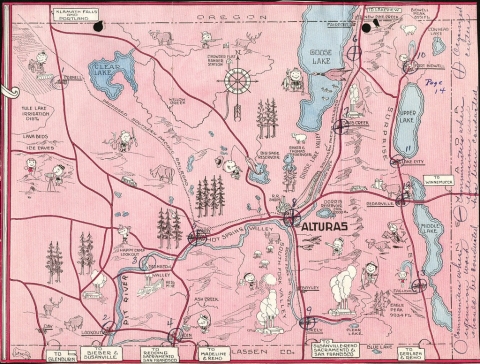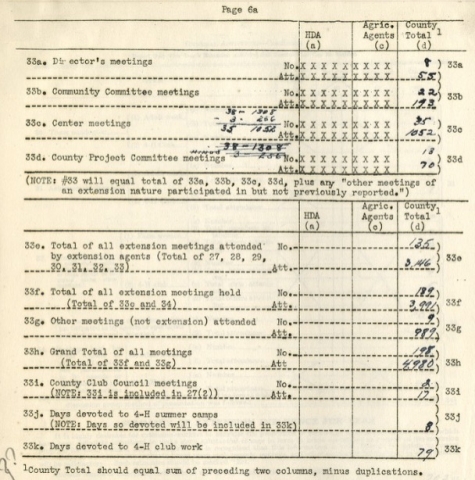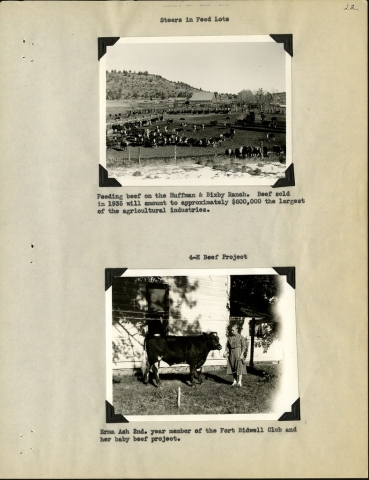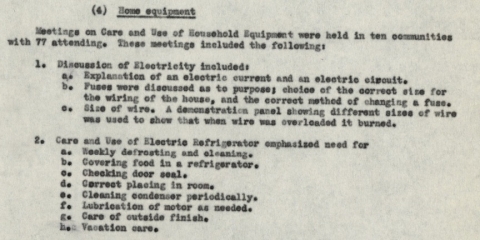Thu, October 14, 2021 2:55 PM
This summer, the California Agricultural Resources Archive (CARA) team published historic records from the UC Cooperative Extension office in Modoc County online. Modoc County is the northeastern-most area of California and shares a border with both Oregon and Nevada. The documents we recently digitized date from 1929 to 1953 and consist of annual reports created by farm advisors and home demonstration agents.

Modoc County, UC Cooperative Extension Records
UC Merced, UC Cooperative Extension Archive
These annual reports offer an unparalleled look into the day-to-day operations of UC Cooperative Extension work. Readers will find information about the partnership between UCCE and the Farm Bureau to ensure that all county residents had access to Extension activities and assistance. Using standardized guidelines to fill out yearly statistics, county agents recorded data regarding the number of meetings and demonstrations held and the topics covered during these gatherings. For example, the 1929 report, the earliest available, documents the formation of six farm centers and initial demonstrations to improve feeding rations for livestock. Modoc County farm advisor John C. Hayes indicates that for the year 1935, there were 1,002 farm or home visits to conduct Extension work throughout the county. According to that year’s statistical report, forty-two days were dedicated to the 4-H summer camp. Youth development programs organized under the helm of 4-H are mentioned throughout the statistical and narrative annual reports and reveal the ways in which UC Cooperative Extension outreached to rural youth. Crop trials and livestock demonstrations are some of the many other subjects recorded in these statistical reports.

Modoc County, UC Cooperative Extension Records
UC Merced, UC Cooperative Extension Archive
The annual narrative reports provide information that is more descriptive. Instructions to county agents ask that “every statement should be clear-cut, concise, forceful and, where possible, reenforced [sic] with ample data from the statistical summary,” and that they “where practicable illustrate with photographs, maps, diagrams, blueprints, or copies of charts and other forms used.” The narrative summaries written by UCCE Modoc County personnel contain many of these features. The 1935 narrative report documents the organization of the South Fork Irrigation District for the purpose of storing flood water and supplemental irrigation to ranches in the area. One page of the 1935 report displays two photographs: one portrays a beef ranch, a primary agricultural activity in the region, and the other shows 4-H member Erma Ash with her livestock participating in a baby beef project.

Modoc County, UC Cooperative Extension Records
UC Merced, UC Cooperative Extension Archive
The 1938 narrative report details the results of demonstration planting of forage varieties as well as some of the diseases affecting rangeland livestock. In a 1944 annual narrative report, home demonstration agent Gladys E. Hedlund details various meetings organized that year on the usage of household kitchen equipment. In ten Modoc County communities, seventy-seven women attended these gatherings with the aim of improving rural home life. In one meeting, handling of electric refrigerators was discussed. Demonstrations included the “weekly defrosting and cleaning, covering food in a refrigerator, checking door seal, (and) correct placing in room”—all important reminders for families using these relatively new technologies.

Modoc County, UC Cooperative Extension Records
UC Merced, UC Cooperative Extension Archive
The annual statistical and narrative reports offer a clear account of Cooperative Extension work in Modoc County and a taste of life in the region during the first half of the twentieth century. To see the collection on Calisphere, visit this link.
Up next for the Modoc County, UC Cooperative Extension Records: we are processing, preserving, and digitizing audiovisual material found in the collection. Photographs, negatives, slide transparencies, reel-to-reel audio tapes and other formats that each require special attention and care, will become available online. Stay tuned for future updates.

